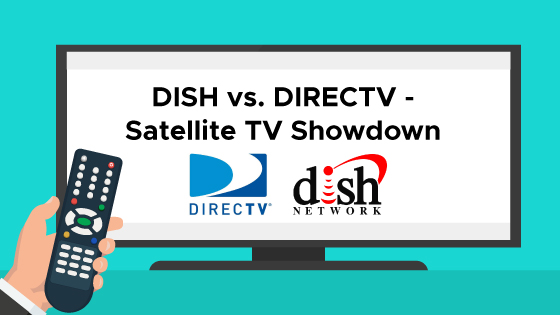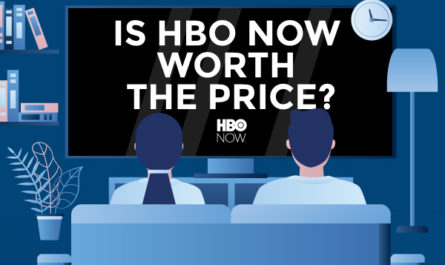Despite continuing advancements in infrastructure, large swaths of America still suffer from insufficient cable and fiber optic coverage. Almost 60% of rural Americans feel that high-speed internet access is a problem in their area. Living in regions without good coverage can mean living without cable TV, and in many places, without even local TV reception.
Fortunately, the satellite TV industry has risen to meet this demand. Discrete dishes have replaced the large, unsightly units of the past. Reductions in the size of dishes have decreased their vulnerability to inclement weather, and improvements in the technology have greatly improved the range and responsiveness of satellite TV products.
At the heart of this improvement lies the competition between two major providers of satellite TV: DISH and DIRECTV. A glance at the offerings from these two heavy hitters look similar, but a few crucial differences make all the difference – especially when signing onto a long-term contract. In this article, we’ll help you determine the right choice for your home.
The Brands
DISH, an acronym for “Digital Sky Highway,” originated as the consumer arm of EchoStar Communications Company. EchoStar began in 1980 as a humble communications satellite business with only two units, one of which blew off in a windstorm during the company’s early days.
In 1996, EchoStar launched its first foray into the direct-broadcast satellite (dbs) world, and DISH Network was born. DISH has a history of bold action and early adoption, offering the first HD programming in 1999. While the higher def required a second dish and had little to offer in the way of actual programming, it tells a story about a company unafraid to try new things.
In 2008, EchoStar spun off DISH into its own company. From there, the company began making moves to expand its user base. DISH purchased a bevy of bargain-bin companies in 2011, from Blockbuster Video to Terrestar, a bankrupted telecommunications company.
These moves have enabled DISH to leverage their spots in both the film and telecommunications industries. Blockbuster’s partnerships gave DISH earlier broadcast rights on certain films and TV shows, and their purchase of Terrestar and other telecoms allowed expanded access to certain broadcast frequencies.
DIRECTV led the way on direct-broadcast satellites, launching the industry in 1994. A 1999 acquisition of PrimeStar, a significant competitor in the DBS field, gave DIRECTV the bulk of the market share, leading to a 2004 pivot of their parent company Hughes Electronics to focus entirely on their satellite TV projects.
Their arms race with DISH raged on through the 2000s. In 2007, DIRECTV moved to provide 150 HD channels nationwide, one of the best offerings available at the time. In 2014 they took the viewing experience a step further, becoming the first satellite TV to offer 4k programming.
Following a 2015 buyout, DIRECTV today exists as a subsidiary of AT&T, and is also available bundled with CenturyLink internet. This ownership gives DIRECTV major leverage; AT&T has a strong foothold as a provider of cable, internet, and mobile coverage. The company continues to explore ways to leverage their presence in those markets to integrate across platforms and viewing devices.
Technology
Satellite TV comes in two parts: the dish (also known as the antenna or the horn) and the receiver. The dish is the part physically mounted on the outside of your house. Satellites launched by the service provider receive a signal from the broadcaster, bounce the signal back down to your dish, and your dish then bounces that signal to your receiver.
Service providers purchase orbital locations wherein they can position individual satellites. The satellites themselves broadcast at specified frequencies following clearance by the FCC and purchase by the service provider itself.
Think the science lesson is unnecessary? Think again. That technology can make a big difference depending on your location or the channels you wish to utilize. The more satellites within range of your dish, the more channels they can provide. Specific frequencies may broadcast different packages, or to a limited selection of dishes on the ground.
12 DIRECTV satellites orbit in locations ranging from 95°W to 110°W longitude. While DISH has around half as many satellites, they have placed them at a wide range of orbits, giving them total coverage along with some higher tech allowing more robust transmission and more channels, depending on your actual dish and receiver.
DISH satellites orbit the planet fewer in number but spread across a broader range of latitudes from 77°W to 119°W. Depending on the location, users may need to choose between dish units that point at either the “western” or “eastern” arc of satellites to receive certain channels in HD.
Beyond the broad strokes, each service comes with its own proprietary devices. Satellite TV used to require a dedicated dish and receiver for each television, which limited access to anything but local channels in most households. Today, both DISH and DIRECTV have developed workarounds to this problem, improving the portability and utility of their service.
DISH
Using their proprietary DISH 1000.2 antenna west of Chicago, or the 1000.4 model east of Chicago, DISH provides HD and SD to the vast majority of the country. Users near the boundary may need to check with DISH to ensure they get the right model for the coverage they want.
On the receiver front, DISH sports a diverse lineup suited to different needs and households. The “Hopper and Joey” pairing of devices offers an elegant solution to the problem of viewing on multiple sets.
The latest model, the Hopper 3, boasts 2,000 hours of DVR recording time allowing you to store an enormous amount of missed programming for those rainy days when you’ve got time to catch up.
Wireless connectivity means you can supplement your Satellite TV service with streaming apps like Netflix and Hulu. Additionally, DISH offers the unique ability to simultaneously record all primetime television shows on the “big four” networks – Fox, ABC, CBS, and NBC – eliminating the need to pick and choose when schedules conflict.
The Joey allows multiple TV sets to access the programming on a single Hopper unit. Each Hopper can accommodate up to three Joeys. Joeys come in both wired and wireless models, the latter allowing for installation even in places where cabling is difficult – i.e., the outlets are full, or accessing the back of the TV would require a challenging unmounting.
Especially appealing for the outdoor enthusiast, DISH offers devices called the Tailgater and Wally. The Tailgater allows for on-the-go satellite TV reception at a monthly rate, while the Wally functions as its equally portable receiver counterpart.
Tech Wins
- Smart scan searches across all platforms instantly
- “Autohop” Instant commercial skipping
- More than double the HD storage of DIRECTV, and 4x the SD storage
Tech Losses
- No pause or rewind of live TV
- Additional hardware means additional cost for multiple TV connections
DIRECTV
DIRECTV offers a slightly more limited range in its receiver technology. Still, one could make the argument that they simply found a better solution to some of the problems inherent in satellite TV. All models allow parental control and Scoreguide, but the similarities end there.
At the top of the heap for DIRECTV lies the Genie line, available in either the Genie or Genie Lite. The models share most features, but only the Genie offers the ability to view in 4K. Additionally, the Genie Lite does not display caller ID on the screen should a ringing phone interrupt your viewing experience.
For sports buffs, DIRECTV offers the Scoreguide, a quick and easy proprietary feature showing the scores, standings, and schedules for all major sports. Combined with Doubleplay, a feature allowing users to toggle back and forth between two channels at once, DIRECTV seems to have a particular focus on catching the sports fan demographic.
The Genies also allow DIRECTV users to connect up to 8 TVs to a single unit, without the need for additional receivers – provided they are Smart TVs. While this feature is tremendously powerful, it goes above and beyond what many households need from their service provider.
Tech Wins
- Most receivers allow you to set DVR recordings remotely from computers
- Restart shows you missed – including those you forgot to record – up to 72 hours after airing
- Received Energy Star award from the EPA for the energy efficiency of their receivers
Tech Losses
- More limited storage capacity than DISH receivers
- Only four unique views – i.e., four different programs playing off of one receiver
What’s On
DIRECTV’s most luxurious package offers over 330 channels, while DISH offerings top out at just over 290 channels. Both have around 200 channels offered in HD, and most of the heavy hitters – staples like TNT, TBS, Comedy Central, ESPN – can be found on both services.
However, a few key differences between the providers do exist. DIRECTV does much better with sports. DISH offers an advantage for the sports-minded by including ESPN with all of its packages, but DIRECTV has exclusive rights to ESPN classic. DISH only offers an on-demand version of the channel with a more limited lineup.
Additionally, DIRECTV has exclusive rights to NFL Sunday Ticket, making it the go-to choice for anyone who simply has to catch every game every Sunday. To sweeten the deal, Sunday Ticket comes free with mid-to-upper tier packages – at least for the first year. On the other side of the coin, DISH offers Outdoor Sports and the Racetrack Television Network.
DIRECTV also has a leg up in the premium channels market, offering HBO, STARZ, Showtime, and Cinemax for free the first three months. For all but STARZ and HBO, DISH viewers need to jump through a few extra hoops to get those channels.
STARZ does exist on DISH’s higher-tier packages, but the company currently does not offer HBO due to an ongoing arbitration. The mere existence of the negotiation suggests the impasse might not last, but considering it has lasted a year so far, there’s no suggestion it will end soon either.
Long story short, before settling into a contract, you’ll want to search through all the options for each provider – a bit of a moving target – and decide whether quality or quantity matters more.
Costs
Pound-for-pound, DISH wins the pricing battle. Though technically DIRECTV starts cheaper, they do put in a price hike in the second year, whereas DISH offers more flexible contract options. Both start at a similar price point on their most basic plans, but the story doesn’t end there.
DISH offers a no-contract option, allowing month-by-month flexibility and no rate hikes going forward. They also offer a two-year contract, allowing for some savings if and when you become comfortable with the service. Going month-by-month will cost a little extra.
By contrast, DIRECTV locks in subscribers to a two-year contract. This can feel a little like a marketing trick, designed to lure subscriptions by backloading the actual cost. Free premium channels and NFL Sunday Ticket make a commitment appealing, but only come free for three months. The sunk-cost fallacy makes it psychologically harder to leave once the prices rise.
Some DIRECTV packages more than double going into the second year. Perusing their menu of plans, you do have to do a little digging to find that out. Knowing this ahead of time, you can factor those costs into your budget before deciding on a plan. Considering the superior channel offerings, you have to determine what “worth it” means to you.
One big “watch out” for both services: canceling can cost you if you committed to a contract. Both providers may charge the remaining value of your contract – something to keep in mind, especially with DIRECTV requiring a contract to get any service at all.
Other Monthlies
To maximize the DVR options requiring the top-of-the-line Hopper 3 receiver, DISH charges an additional monthly fee. However, some of the lower-tier receivers do come free with their monthly plans. Regional sports coverage also comes free with DISH.DIRECTV, on the other hand, offers free DVR service but charges a monthly fee for regional sports.
Both DISH and DIRECTV include monthly “lease fees” or the cost to use the provider’s equipment, which they own. DIRECTV waives the fee for its first receiver, while DISH includes a small fee for each receiver. Both companies charge a fee for any additional receivers, and DIRECTV also adds an installation fee for extra units.
Extras
Both services offer the ability to take your viewing mobile. DIRECTV allows viewing on mobile devices, but only when the device connects to the same wifi network as the receiver. DISH, on the other hand, offers a fully on-the-go experience, with mobile viewing.
Both companies have also joined the streaming market. DIRECTV Now, the DIRECTV streaming service recently rebranded to AT&T TV Now. AT&T TV Now, like DIRECTV’s satellite viewing, offers a variety of packages and content to suit your mobile viewing and streaming needs. Still, most of them pale in comparison to an actual Satellite TV package.
DISH revolutionized the cord-cutting world with Sling TV, the first live TV streaming service to hit the market. Sling comes at an excellent price point, but with a few caveats: the service does not include local channels, and the lower-tier “Sling Orange” package has a restriction allowing only one device to stream.
Customer Experience
Considering the customer experience for each provider, it’s worth noting that both DISH and DIRECTV significantly outperform their traditional cable competitors. In 2019, DISH received the #1 ranking among television service providers by JD Power & Associates. DISH got the highest marks of any provider in key measures like cost, billing transparency, and customer service.
Historically, DIRECTV enjoyed a spot at the top of the American Consumer Satisfaction Index (ACSI). Following their merger with AT&T, they dropped a few places, but the most recent measure showed them on the upswing and landing just behind DISH in 2019.
Thinking Long Term
Concerns exist that satellite TV is on its way out. Indeed, the trend towards cord-cutting and streaming services have cut deeply into the satellite TV realm. While cable providers have stayed afloat by bundling internet access with television packages, satellite TV has no such coattails to ride.
Indeed, DIRECTV has stopped buying satellites following their purchase by media giant AT&T, indicating a pivot from the technology towards the streaming market. AT&T TV Now offers a package with live streams of major networks like CNN, ESPN, MTV, and more.
DISH also moved some eggs to another basket with the launch of Sling TV in 2015. Sling TV offers around 30 channels live streaming, offering an affordable solution to the desire for live TV without the sting of a hefty cable bill full of channels you would never watch.
With both major satellite TV providers joining the “Over-the-top” services fray with companies like Netflix and Hulu, both DISH and DIRECTV find themselves in a market with vigorous competition showing their desire to adapt.
The likelihood that either provider would depart from the satellite TV game entirely seems low. However, it’s worth considering the commitment each respective provider has to their satellite TV programming.
With DISH existing as a discrete company devoted entirely to satellite TV, one can assume they will remain committed to providing the best possible service for the foreseeable future. Indeed, they have even faced antitrust complaints about aggressive maneuvers in the past, including an effort to purchase DIRECTV itself.
Conversely, DIRECTV exists under the AT&T umbrella. The merger took place ten years later than the DISH/EchoStar split. AT&T certainly can handle big projects and major infrastructure, but their relatively recent entry to the industry may leave them a little underprepared for market changes going forward.
Moreover, DIRECTV’s subsidiary status means it exists at the pleasure of AT&T and its varied business interests. Fortunately, as the largest premium TV provider in America, DIRECTV subscribers can have confidence that the brand will benefit from AT&T’s tremendous reach, even if it may take a backseat to other revenue streams.
The Winner
DISH and DIRECTV’s ongoing war for satellite TV supremacy makes for a fascinating case study in free-market economics. While it’s by no means simple to launch a direct-broadcast satellite, once in orbit, it becomes a lot easier for a company to expand its range and user base.
In the early days, satellite TV was relegated to rural areas, and limited by large, cumbersome equipment. As technology advanced, so too did the satellite TV experience, and the two major players find themselves continually adjusting price, packaging, and even corporate structure to maintain or grow their market share.
Currently, DISH is leading the race. While the astronomical channel counts on DIRECTV look lovely in a chart, most viewers only need a few staples. More importantly, they need those staples to come with an affordable price tag, and DISH takes the cake not only with total cost but with the option to go month-to-month without the risk of pricey cancellation fees.
Their technology is superb, and the option to view DVR content remotely becomes more appealing with each day as we grow more accustomed to mobile connectivity.
However, hardcore sports viewers – especially NFL fans – find themselves in a better spot with DIRECTV. Even outside of the ESPN family tree, DIRECTV offers a wide range of sports-related programming and unique features that give it a definite appeal.
The lack of HBO on DISH may give fans of particular shows pause, but with HBO itself now offering an a-la-carte streaming service, DISH subscribers do at least have a solution.
But the real win for DISH comes during the moment you’re at right now – trying to pick. DISH is leaps and bounds ahead in terms of transparent pricing, while DIRECTV does hide some vital details in the fine print. Trying to sort through DIRECTV’s technological specifications and package details, too, quickly becomes confusing.
Ultimately, you decide on your deal-breakers when it comes to television providers, but hopefully, laying out the big differences here will help you in your search.




